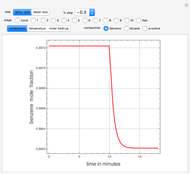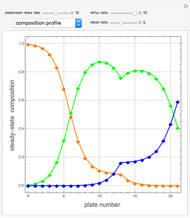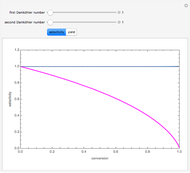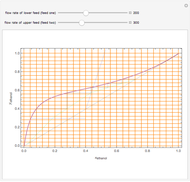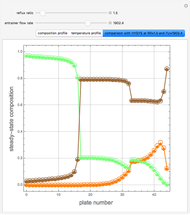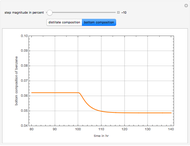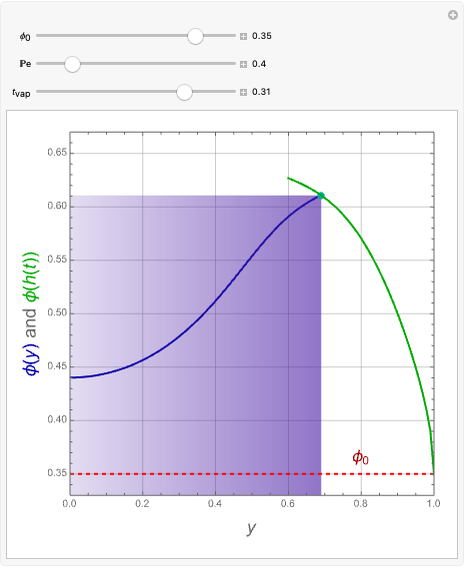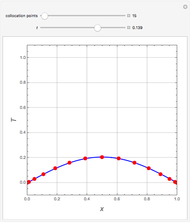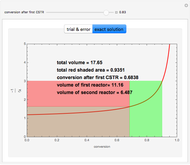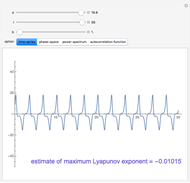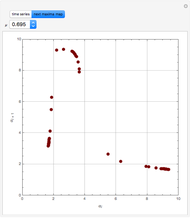Multicomponent Distillation: The Case of Pentane/Hexane/Heptane System

Requires a Wolfram Notebook System
Interact on desktop, mobile and cloud with the free Wolfram Player or other Wolfram Language products.
Consider a ternary mixture composed of pentane (component 1), hexane (component 2), and heptane (component 3) such as their relative volatilities are equal to  and
and  . This mixture is fed into a distillation column in the form of a saturated liquid with the following composition: 30% pentane, 30% hexane, and 40% heptane. The distillate composition specification is 95% pentane, 4.9% hexane, and 0.1% heptane. The bottom composition specification is 5% pentane, 39.7% hexane, and 55.3% heptane.
. This mixture is fed into a distillation column in the form of a saturated liquid with the following composition: 30% pentane, 30% hexane, and 40% heptane. The distillate composition specification is 95% pentane, 4.9% hexane, and 0.1% heptane. The bottom composition specification is 5% pentane, 39.7% hexane, and 55.3% heptane.
Contributed by: Housam Binous (March 2011)
Open content licensed under CC BY-NC-SA
Snapshots
Details
For more information, see:
M. F. Doherty and M. F. Malone, Conceptual Design of Distillation Systems, New York: McGraw–Hill, 2001.
Permanent Citation










